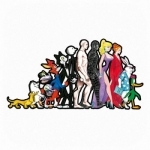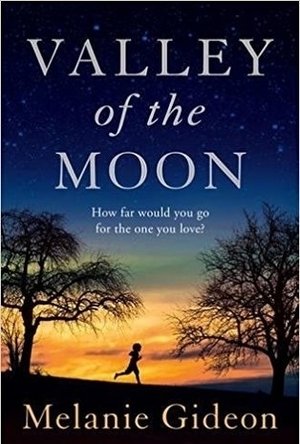
The Secret To Money
Lifestyle and Finance
App
The Secret to Money is an app that is designed to change the way you think about money, and to...
Gareth von Kallenbach (980 KP) rated The Rum Diary (2011) in Movies
Aug 7, 2019
The Rum Diary follows Paul Kemp (played by Johnny Depp), a failed novelist turn journalist, who finds himself at a critical turning point in his life. Having written two and a half novels that were never published, he was having trouble finding his voice, in that he needed to find a way to “write like him” as Paul put it himself. So he decides to do some freelance writing for a small publication located in San Juan, Puerto Rico in 1960.
The movie opens with Kemp waking up in a hotel, and you can immediately, and clearly, see that he partakes in certain pleasures of life. After reporting to work at San Juan Star, Kemp meets Sala (played by Michael Rispoli), the photographer for the Star who quickly becomes his cohort. The editor-in-chief of the San Juan Star, Lotterman (played by Richard Jenkins) indicates to Kemp that the publication is only a few months away from being closed down, and that there really isn’t much to look forward to. He assigns Kemp to do some fluff pieces and the horoscope section of the paper.
Kemp is not content with this as he is looking at this experience as a way to put his career back on track. Over the next few days, during his adventures with Sala, he comes across a few different story ideas that are immediately shot down by Lotterman, as they emphasize the things that are wrong with San Juan, and Lotterman feels that the focus should be on the good things (like bowling alleys).
During one of his nights of boozing, he meets Chenault (played by Amber Heard). She’s aloof, mysterious, and of course… Kemp falls immediately in love with her. She just happens to be the girlfriend of Sanderson (played by Aaron Eckhart). Sanderson immediately recognizes the talents that Kemp has and begins recruiting him for a real estate scam. The idea is to get a foothold and build a new hotel on a private island that is used for United States military testing, but will soon be relinquished from that purpose. Sanderson and a group of investors want Kemp to put a brilliant positive spin on the hotel investment so that the public opinion, and that of those in a position to block the development, is a positive one.
Things begin to unravel as Kemp and Sala’s shenanigans keep getting them into trouble, culminating in a heated night where Kemp, Sala, Chenault and Sanderson end up at a bar during the St. Thomas Carnival.
The Rum Diary was highly entertaining with a great supporting cast. Giovani Ribisi provides an excellent distraction from some of the more serious events of the movie as he appears every now and then as Moburg, another reporter for the San Juan Star. The movie played like a great alcohol-induced, drug-fueled adventures of a journalist in the 1960s. Definitely some quirky moments, and you will find yourself laughing at many of Kemp and Sala’s exploits.
My only gripe with the movie is how it ended. The build up to Kemp printing the story and putting it out there leaves you wanting more. While I don’t think the film will reach the same cult-status that Fear and Loathing in Las Vegas will, it is definitely entertaining (all the way until the end). It is a good nod to Thompson and fans of his books and movie adaptations are sure to enjoy.
Daniel Boyd (1066 KP) rated Black Mirror: Bandersnatch (2018) in Movies
Jan 18, 2019 (Updated Jan 18, 2019)
With all of that said, I decided to give Bandersnatch a go last night. I was intrigued by the whole choose-your-own-adventure concept and did go in wanting to like this thing. Unfortunately, following all the hype that surrounded its release a few weeks ago, I came away pretty disappointed.
As for my spoiler free thoughts, I thought that Will Poulter was the best thing about this film and that Fionn Whitehead's performance was okay, but felt forced and cheesy at times. However, in order to discuss why Bandersnatch ultimately left me disappointed, I am going to have to spoil the movie, so if you haven't went through it for yourself yet, you should probably look away now.
3,2,1... SPOILERS!
So, it turns out that the choices that you make while watching the film don't really matter for the most part. After spending 2-3 hours with it, I discovered that there are only really 2 endings. Either Stefan kills his dad or he goes to the therapist and she breaks the fourth wall. Every other ending is not really an ending and forces you back into the last situation until you make the choice that the filmmakers clearly want you to make.
As we are pretty much controlling Stefan during the course of the story, I chose to pick the best decisions for him, rather than choosing the more cruel, sick settings just to see what would happen. However Bandersnatch doesn't want you to do that and as soon as you make one of these more pacifist decisions, it punishes you by giving you an anticlimactic non-ending and sends you back to your last decision. Being forced to make these destructive choices forces you down the narrative path set out by the writers to the two endings that I discussed earlier and that's your lot. That's really all that there is to see here other than a few surplus arbitrary scenes.
The only things that you really get to decide on is trivial nonsense that has no impact on the narrative, like what cereal to eat or what record to buy. So, why bother making this a choose-your-own-adventure story in the first place rather than just a regular episode of Black Mirror? Because, if this was just a regular episode of a TV show, it would be extremely fucking boring, monotonous and trite.
The show tries to defend itself in these aspects. It insinuates the idea that just as we are controlling Stefan and forcing him to make certain decisions, Charlie Brooker as the writer is controlling us and forcing us to make certain decisions, hence the absence of any real choice for the viewer. I call bullshit on this idea, it's just down to lazy writing to be honest. When the therapist breaks the fourth wall, she also suggests that if this was a TV show that someone was watching for entertainment, it would have to be more exciting and less bland and dull. Pointing out that your show is bland and dull doesn't save it from being just as fucking bland and dull as it would be if you hadn't highlighted it in your script.
The show puts these elements in so that when it is questioned, it can respond saying that you as an audience member are just not clever enough to get it. Unfortunately the fact is that Bandersnatch, - just like Black Mirror - before it, isn't as clever or as cool as it thinks it is and works far better as an idea than it does in execution.
Overall, that's what this is; it's a cool idea executed poorly. I really wish that they had done more with it. It does seem to be a hit though, so for better or worse we can probably expect to see more and more of these crop up on Netflix. Will Poulter was the one saving grace of this thing and he inexplicably vanishes halfway through the story in most of the threads. It did get a reaction out of me though, which is probably what Brooker and his team wanted, it was just an extremely negative reaction due to the realisation that I had wasted my time going through this thing. If you like Black Mirror, you will probably enjoy this, but I'm afraid that it's just not for me.
Hazel (1853 KP) rated Valley of the Moon in Books
Sep 5, 2017
For fans of The Time Traveler’s Wife (Niffenegger, 2003) this captivating story by Melanie Gideon is an alluring, spellbinding work of fiction about loving, being loved and finding somewhere you belong. With a touch of time travel in an otherwise typical reality, Valley of the Moon will excite, enrapture and touch readers’ hearts.
It is difficult to give a synoptic review without giving too much of the plot away. In short, the book contains the two lives of complete strangers who meet under extremely unlikely circumstances. It is 1975 and Lux Lysander is struggling to make ends meet as a single mother in San Francisco. Estranged from her parents, Benno has become her life; Lux would do anything for him. The other half of the story begins in 1906 in the Californian Sonoma Valley. Joseph has achieved his dream of creating an Edenic community where races and classes can live in harmony. Greengage is a self-sufficient society where everyone is seen as equal, however, something happens to shake up the peace – literally. A huge earthquake mysteriously leaves the valley unharmed but completely surrounded by a deadly fog. No one can leave and no one can enter, that is until Lux does.
Until the two characters’ lives collide, the narrative is fairly typical, but it quickly takes on a theme that most minds would attempt to debunk. Through a wall of fog, Lux can pass between 1975 and 1906, whereas Joseph and his friends can only stay in their own timeline. Lux begins to live a double life: one with her son Benno and one with the antiquated lifestyle of the Greengage community. Unfortunately, it is only possible to pass through the fog on a fall moon, and not necessarily every month.
Lux’s modern appearance and colloquialisms baffle the community but she soon finds herself a place amongst the inhabitants. For a while, Lux is able to keep her two lives separate, but one slip up causes her to temporarily lose the love and trust of her only son. Torn between her own flesh and blood and the only place she feels she belongs, Lux has to decide how far she would go for the people she loves.
One of the key themes of the novel is relationship. Although romance develops toward the latter stages of the story, the majority is focused on familial love and love between friends. Lux and Benno’s relationship is particularly important, especially when their love becomes strained by Lux’s secret dalliance with the past. The other significant theme is about finding oneself. Lux lives in an era where, despite developments in women’s equality, single mothers are still shunned. Conversely, in 1906 where historically things were worse for women, the egalitarian society feels much more like home.
Lux’s temerity is to be admired as she continues to visit the past despite it being beyond the bounds of possibility. More applaudable is her determination to win back her son as well as her distant parents.
Despite being set for the most part in the 1970s and 80s, Valley of the Moon has a futuristic air about it, with an element of fantasy and science fiction. It is almost a version of The Lion, the Witch and the Wardrobe (Lewis, 1950) but for adults, with more realistic themes. Melanie Gideon admits that she got the idea for the novel from the film Brigadoon (1954) in which the protagonist stumbles across a magical land in the woods. With similarities, Gideon has created her own version of this fairy-tale-like scenario.
Journeying through a range of emotions, Valley of the Moon is a story that engages readers from beginning to end. With ups and downs, the author explores the lives and personalities of the main characters, which develop beautifully over time. This book is not one likely to disappoint its readers.

Rehearsal® Pro
Productivity and Education
App
Rehearsal® Pro is the app for actors! Be off-book, book more work! Want to learn your lines?...

Kung Fu Panda 2 Storybook
Book and Education
App
★ #1 in Books (iPhone) - May 2011 ★ #2 in Books (iPad) - May 2011 ★ Featured in What's Hot...

The Animator’s Survival Kit
Reference and Education
App
World-renowned animator and triple-Oscar-winner Richard Williams presents ‘The Animator’s...

Architecture and Movement: the Dynamic Experience of Buildings and Landscapes
Peter Blundell Jones and Mark Meagher
Book
The experience of movement, of moving through buildings, cities, landscapes and in everyday life, is...

Porsche Christophorus Box: Issue 378
Book
The September edition of the Porsche Christophorus Customer Magazine, issue-378, will appear for the...

The Luberon Garden: A Provencal Story of Apricot Blossom, Truffles and Thyme
Book
'The rollicking adventures of an English garden designer in Provence' Independent 'Escapist...


